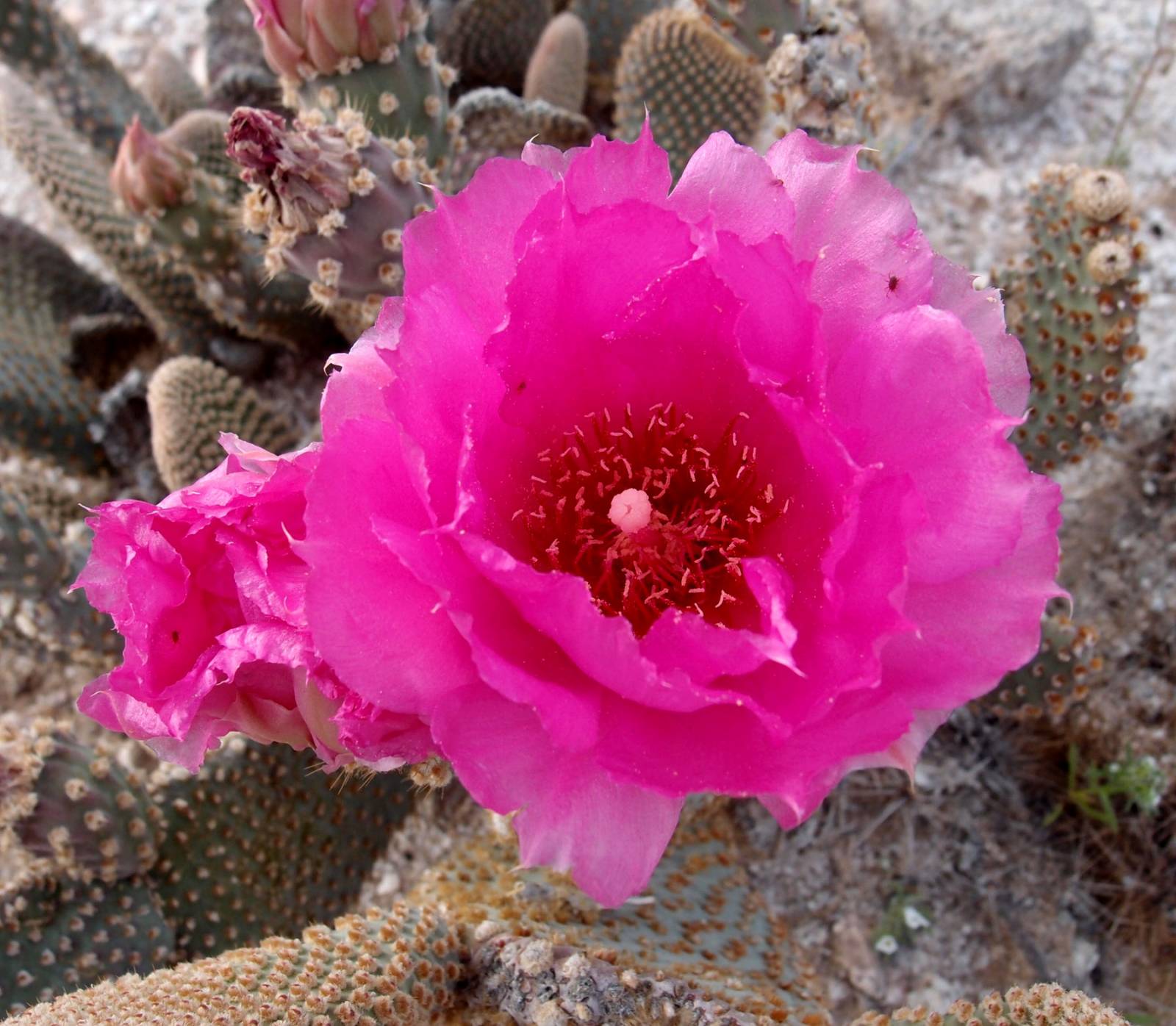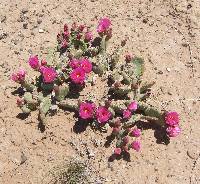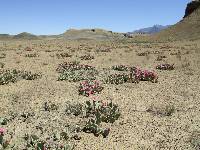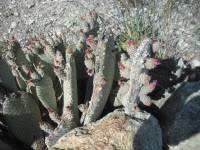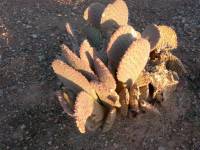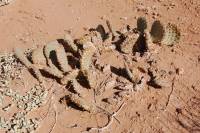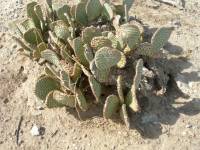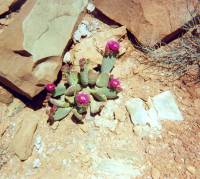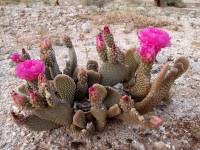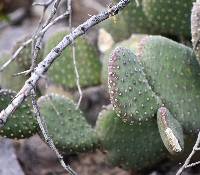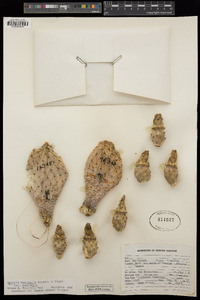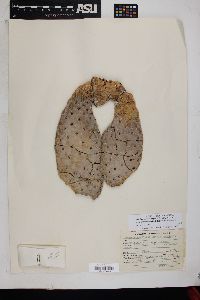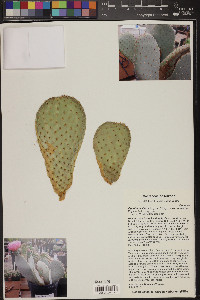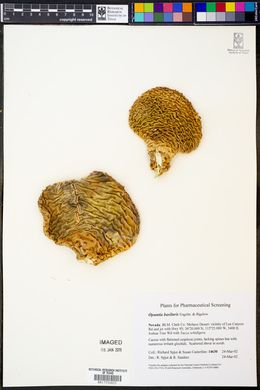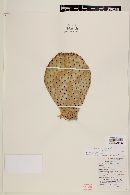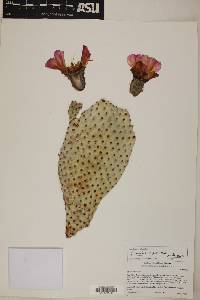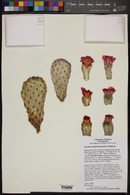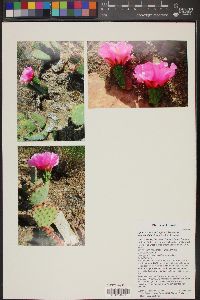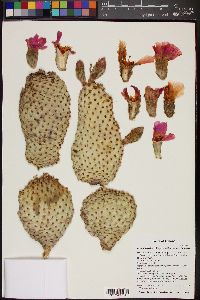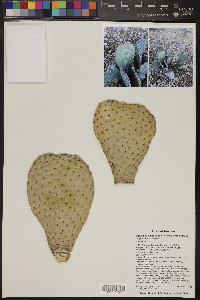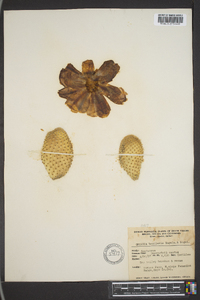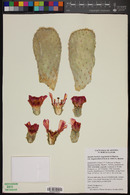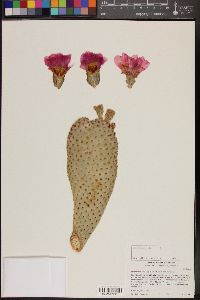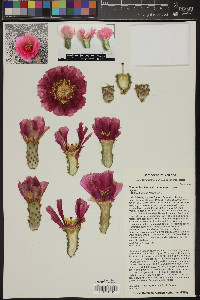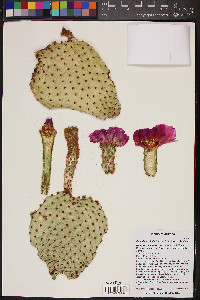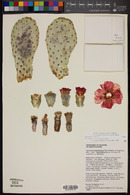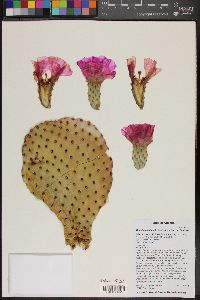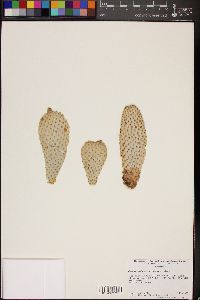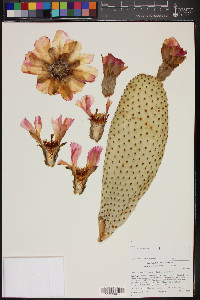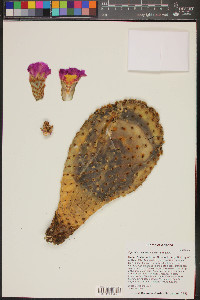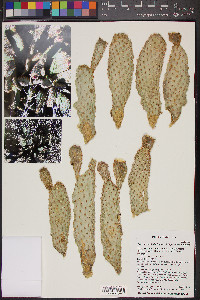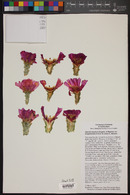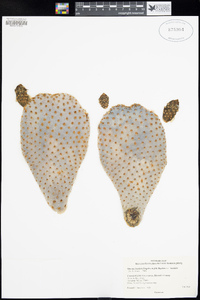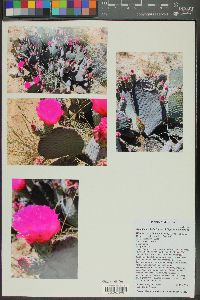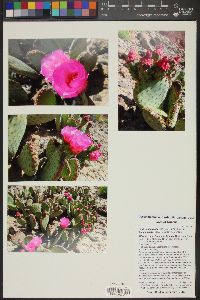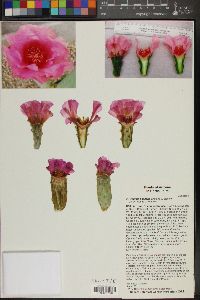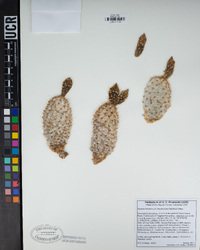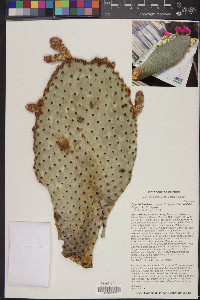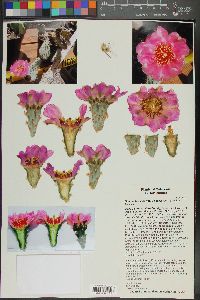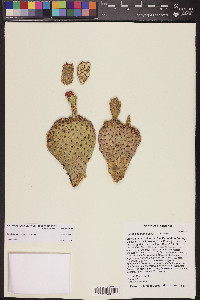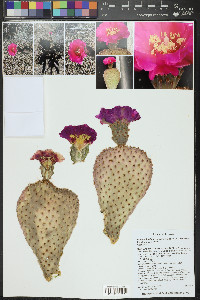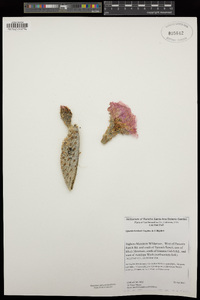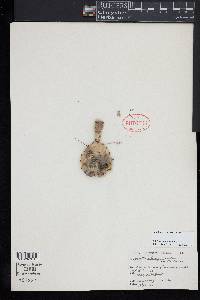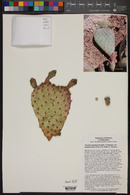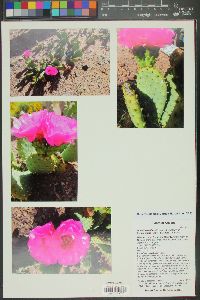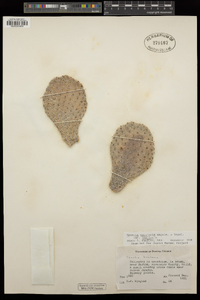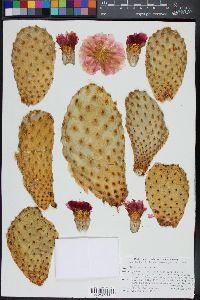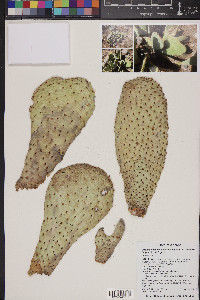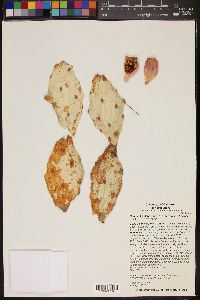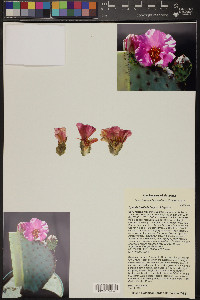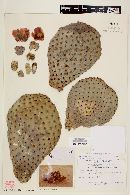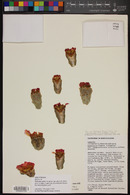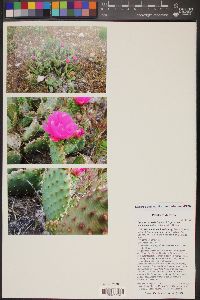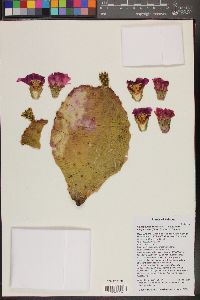Opuntia basilaris
|
|
|
|
Family: Cactaceae
Beaver-Tail Cactus, more...beavertail pricklypear, beaver tail cactus, beavertail prickleypear (es: nopal)
[Opuntia humistrata Griffiths] |
Shrubs, forming clumps, 1-2(-3) segments tall, to 7-40 cm. Stem segments not disarticulating, blue- to yellow-green, sometimes tinged maroon-purple, flattened, spat-ulate to broadly obovate or subcircular, thick, 5-22(-35) × 2-13.5(-16) cm, nearly smooth, papillose to puberulent (rarely glabrous); areoles 4-16(-19) per diagonal row across midstem segment, circular to elliptic, 3-5 × 3 mm; wool white to tan, aging gray. Spines 0(-8) per areole, when present, usually in distal areoles, spreading, yellow, straight, acicular, 5-25 mm. Glochids numerous, nearly filling areoles, yellow to red-brown or dark brown, to 3 mm. Flowers: inner tepals pink to magenta throughout (rarely white), 25-40 mm; filaments red-magenta (rarely pale); anthers yellowish; style white to pink; stigma lobes white to cream. Fruits maturing tan, 20-40 × 15-23 mm, dry at maturity, puberulent, spineless (except in var. treleasei); umbilicus 5-12 mm deep; areoles 24-76. Seeds yellowish to tan, ± subspheric but angular, thick, 6.5-9 × 6.5-7 mm, sides smooth or bearing 1-3 depressions; girdle protruding to 1 mm. Plant: clump-forming shrub, 1-2(-3) pads and 7-40 cm tall. PADS blue- to yellow-green, sometimes tinged maroon-purple, papillose to puberulent, rarely glabrous, spatulate to broadly obovate or subcircular, thick, 5-22(-35) cm long, 2-13.5(-16) cm broad. AREOLES 4-16(-19) in a row diagonally across midpad, circular to elliptic, 3-5 mm long, 3 mm wide; wool white to tan, aging gray Leaves: SPINES, when present, mostly in distal areoles, yellow, straight, spreading, 0(-8) per areole, 5-25 mm. GLOCHIDS numerous, nearly filling the areoles, yellow to red- or dark brown, to 3 mm long Flowers: inner tepals pink to magenta, rarely white; filaments deep pink to magenta; style white to pink; fresh stigmas white to cream Fruit: FRUITS maturing dry and tan, puberulent, spineless except in var. treleasei, 2-4 cm long, 1.5- 2.3 cm in diameter, the umbilicus 5-12 mm deep; areoles 24-76. SEEDS yellowish to tan, subcircular but angular, thick, 6.5-9 mm long, 6.5-7 mm wide, the sides smooth or bearing 1-3 depressions; girdle protruding to 1 mm. Misc: 350-1700 m (1200-5600 ft); Feb-Jun REFERENCES: Pinkava, Donald J. Cactaceae. 2003. J. Ariz. - Nev. Acad. Sci. Volume 35(2). Benson 1982, FNA 2003, Pinkava 2003 Common Name: beavertail pricklypear Duration: Perennial Protected Status: No status in Arizona. General: Forming low growing clumps usually 1-3 segments tall to an overall height of 7-40 cm, the stem segments spatulate to obovate or subcircular and thick but not disarticulating, blue to yellow green and sometimes purple-tinged under stress, the pads are nearly smooth but minutely canescent, with 4-19 areoles per diagonal row across each midstem segment, these circular to elliptic and 3-5 mm by 3 mm with wool white to tan and aging gray. Spines: Spines 0-8 per areole when present, usually in distal areoles, these straight and spreading, yellow, 5-25 mm, with numerous glochids that nearly fill the areoles, these are yellow to red-brown or dark brown to 3 mm. Flowers: Flower 5-7.5 cm long and diameter with inner tepals pink to magenta (rarely white) 25-40 mm, the filaments red-magenta and the style white to pink. Fruits: Fruits green and maturing tan, 20-40 mm long and 15-23 mm diameter, it is not spiny and dry at maturity, with the seeds bone white or grayish and circular. Ecology: Found in sandy to rocky soils in woodlands, flats, and in chaparral from 1,000-5,500 ft (305-1676 m), flowers February-June. Distribution: s UT to s CA, AZ, and Sonora, MEX Notes: The species in our region is likely var. basilaris which can be distinguished by its essentially spineless segments that are broadly obovoid to subcircular, erect, with 10-16 areoles per diagonal row across the midstem segment. Ethnobotany: Buds cooked and eaten or dried for storage, seeds ground into mush, joints boiled and mixed with other foods or eaten as greens, fruits dreid and sold by children in small sacks for ten cents. Etymology: Opuntia from ancient root puncti for prickled, while basilaris means basal, stretching from the base. Synonyms: Opuntia whitneyana, Opuntia brachyclada, Opuntia basilaris var. brachyclada Editor: LCrumbacher, 2010 |
|
|
|

